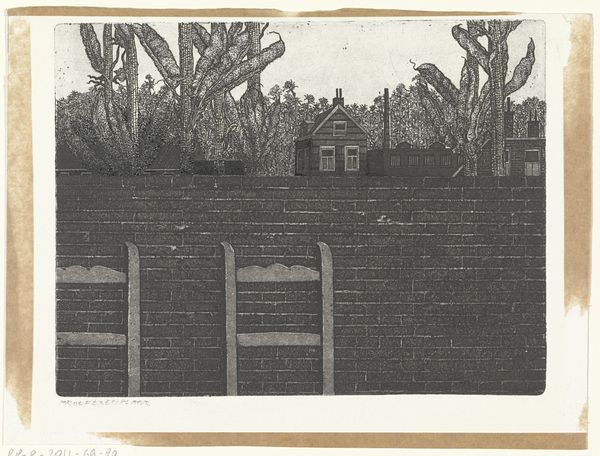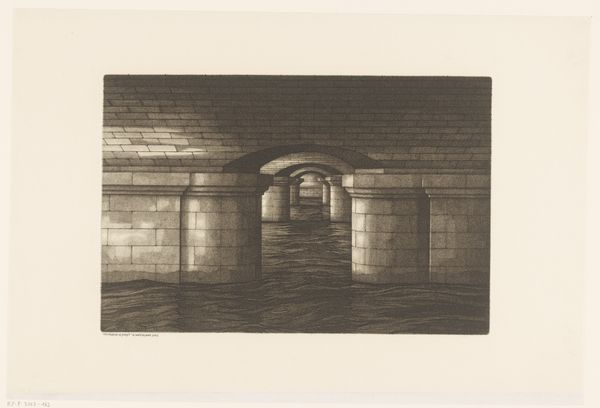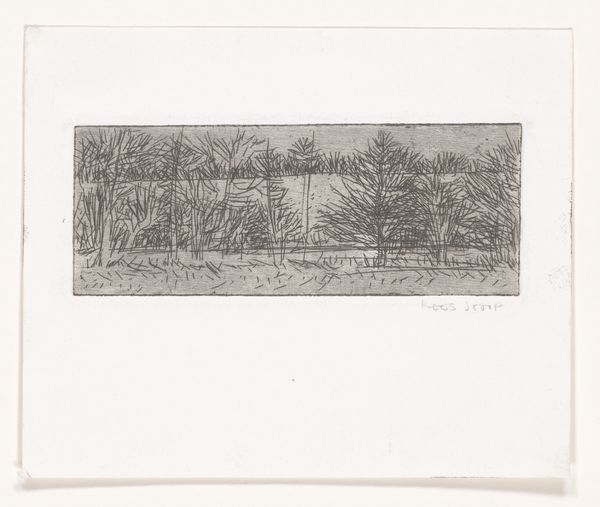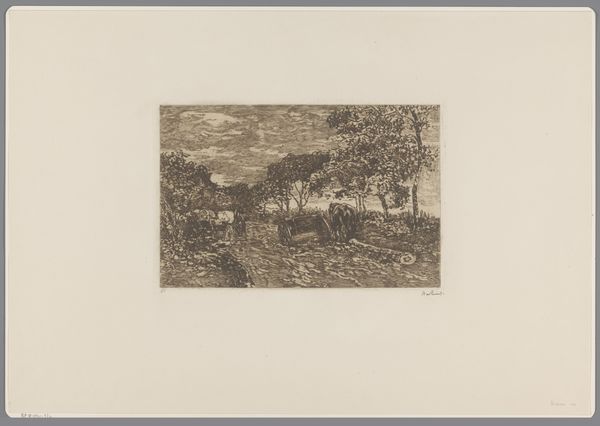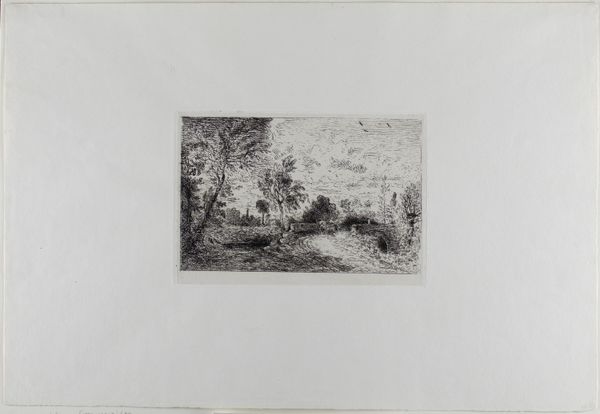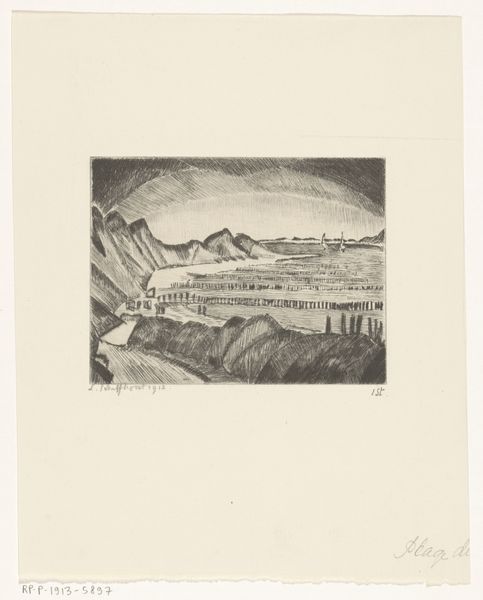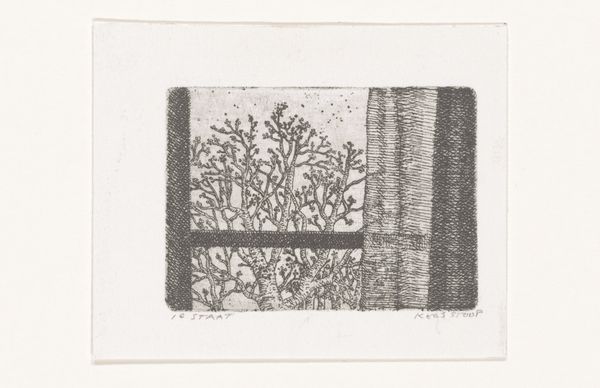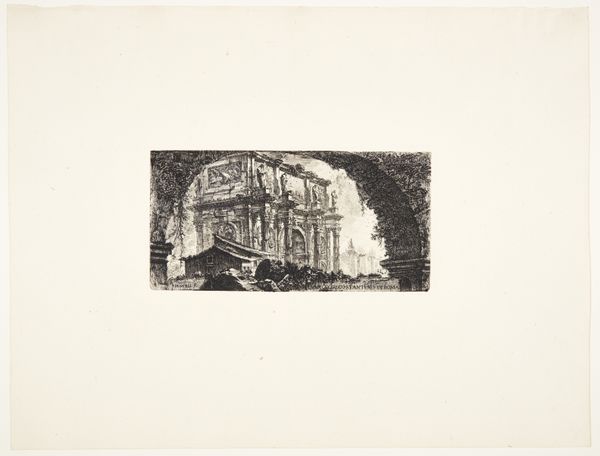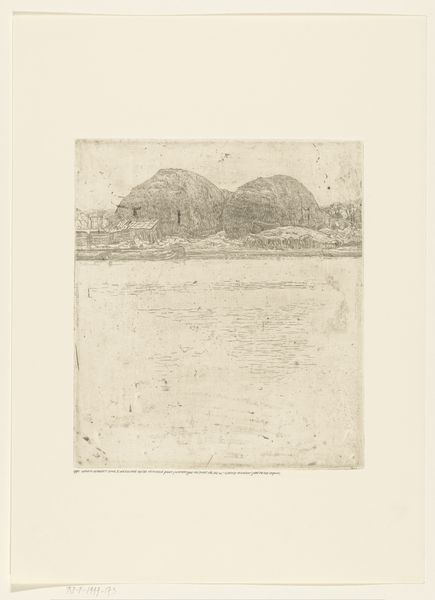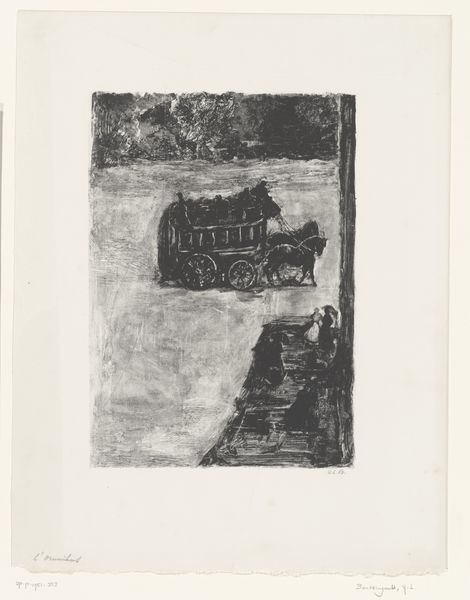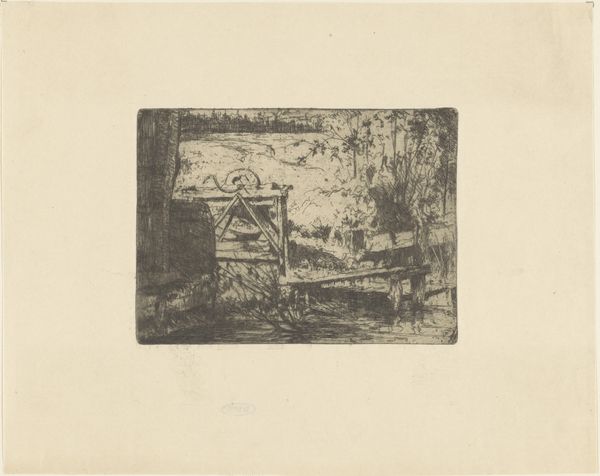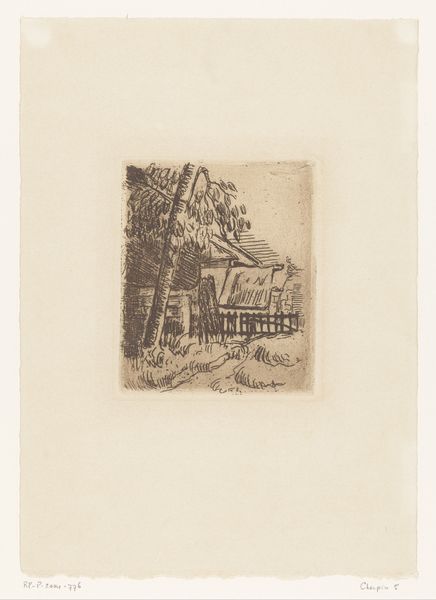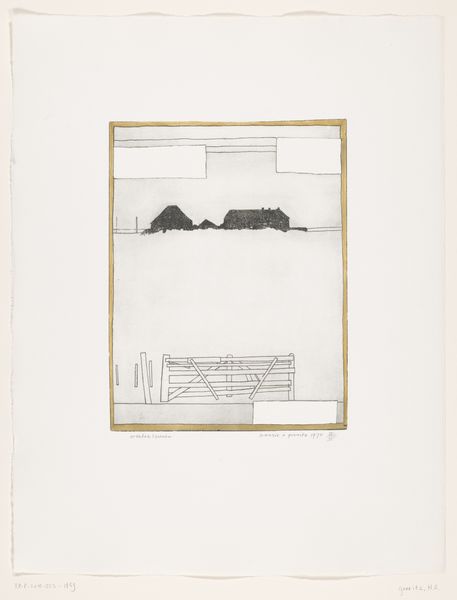
drawing, print, linocut, paper
#
drawing
# print
#
linocut
#
old engraving style
#
landscape
#
paper
#
linocut print
Dimensions: height 185 mm, width 213 mm, height 125 mm, width 152 mm
Copyright: Rijks Museum: Open Domain
Curator: This is "Stoelen bij schutting," or "Chairs by Fence," a linocut on paper, likely created by Kees Stoop between 1944 and 1990. It is part of the Rijksmuseum collection. Editor: The high contrast and the seemingly rudimentary execution create a disquieting tension—almost claustrophobic with the imposing fence and shadowed chairs. The tall cornstalks or sunflowers in the distance loom as figures. Curator: The high contrast is typical of linocut prints, emphasizing form through stark positive and negative space. What intrigues me are these commonplace chairs. Do they stand as stand-ins for missing persons, perhaps, representing those who can no longer gather in that intimate outdoor setting? Editor: An interesting point. Formally, I see a deliberate separation, almost a fragmentation. The thick dark fence occupies nearly two-thirds of the composition, visually impeding access to that natural realm beyond. This restricted viewpoint reinforces the feeling of enclosure and confinement. Curator: The choice of depicting what appears to be wilting sunflowers or corn might speak to a larger societal unease or distress during that time. Sunflowers, typically symbols of vitality, become melancholic. And that fence—what does it represent? Physical separation or psychological barriers? Editor: Given the period in which Stoop was active, and this deliberate construction, I'd argue it becomes more potent as a symbol. The dense, uniform marks create a palpable weight, physically blocking the composition. The chairs become secondary, props awaiting players long gone. Curator: So, while seemingly simple, the artist is really dealing with themes of exclusion and perhaps forgotten bonds using everyday, culturally understood visual symbols. The very medium reflects the era's hardships through its accessibility. Editor: Agreed. The print embodies the austere conditions of the time through technique, composition, and carefully selected, poignant motifs. It's less about idyllic recreation, more about the lasting shadows of interruption.
Comments
No comments
Be the first to comment and join the conversation on the ultimate creative platform.
